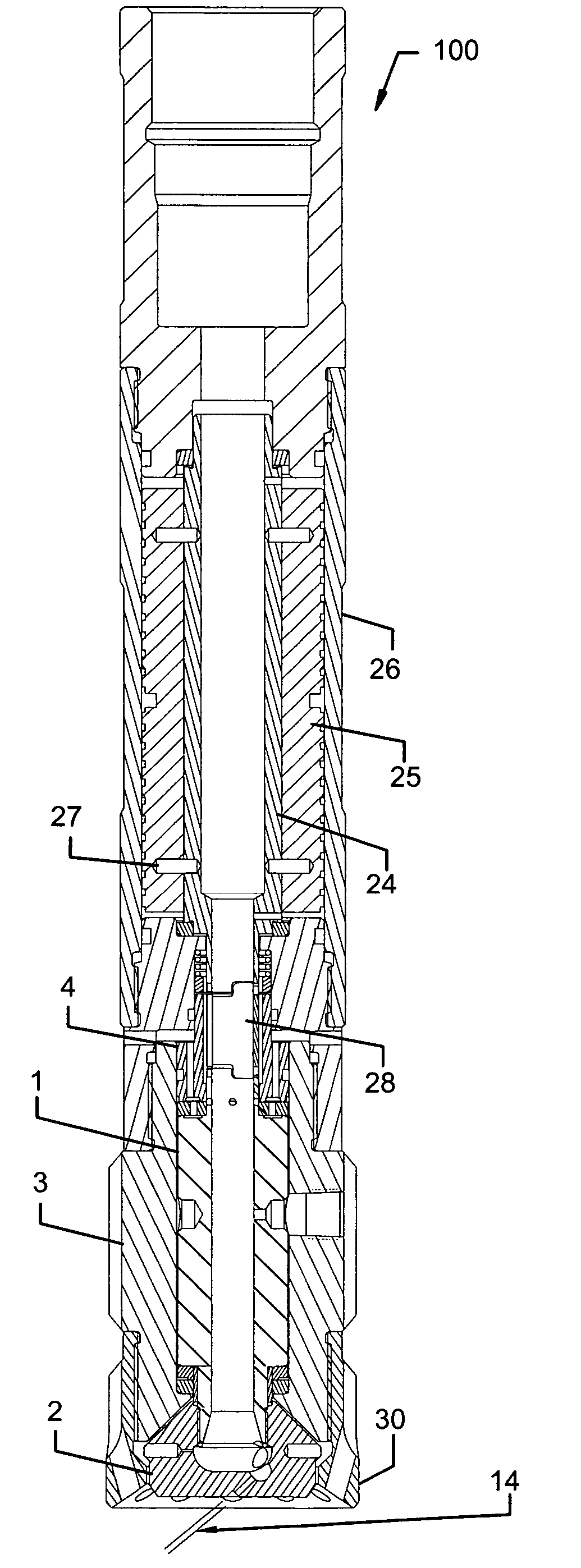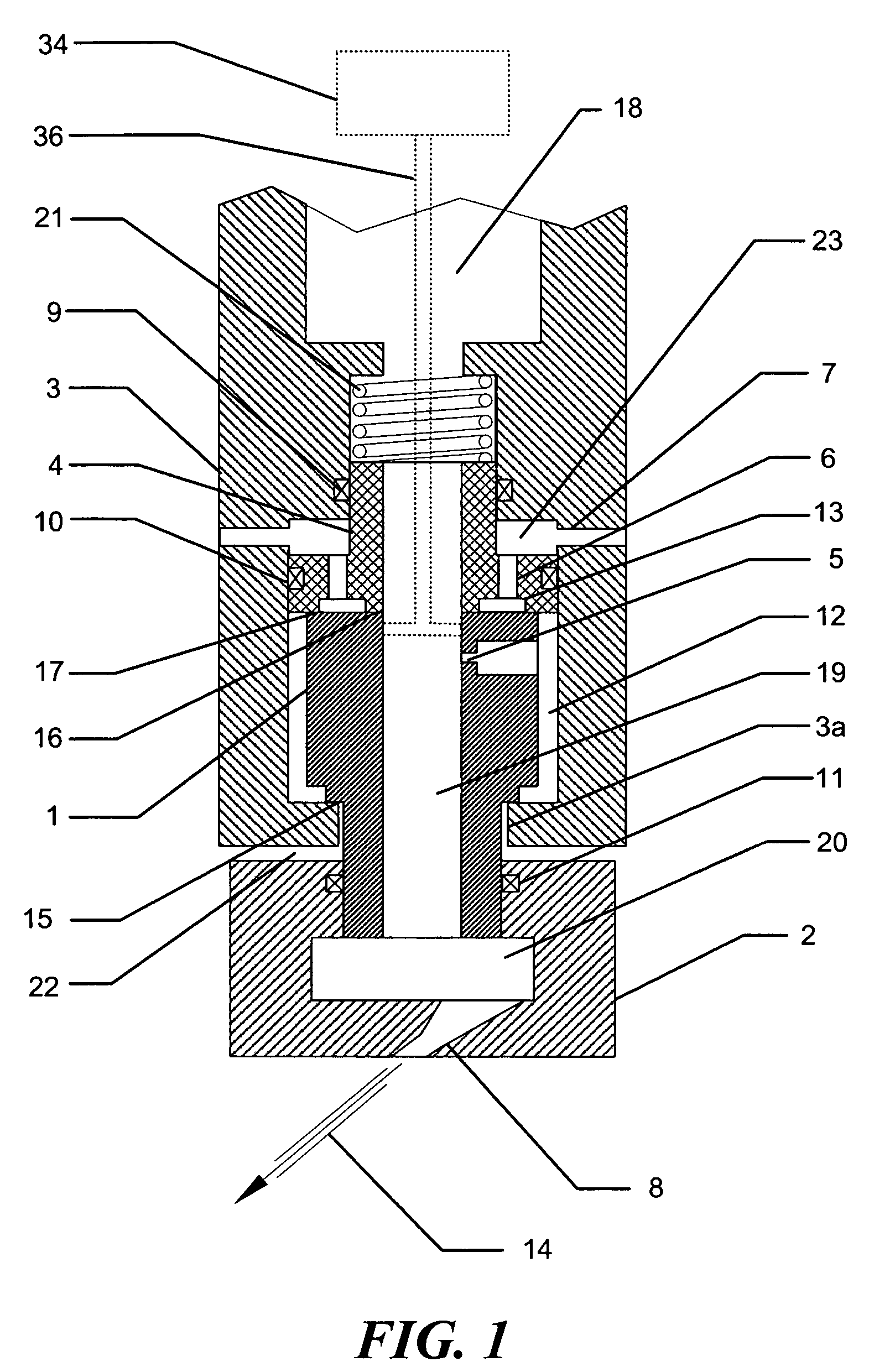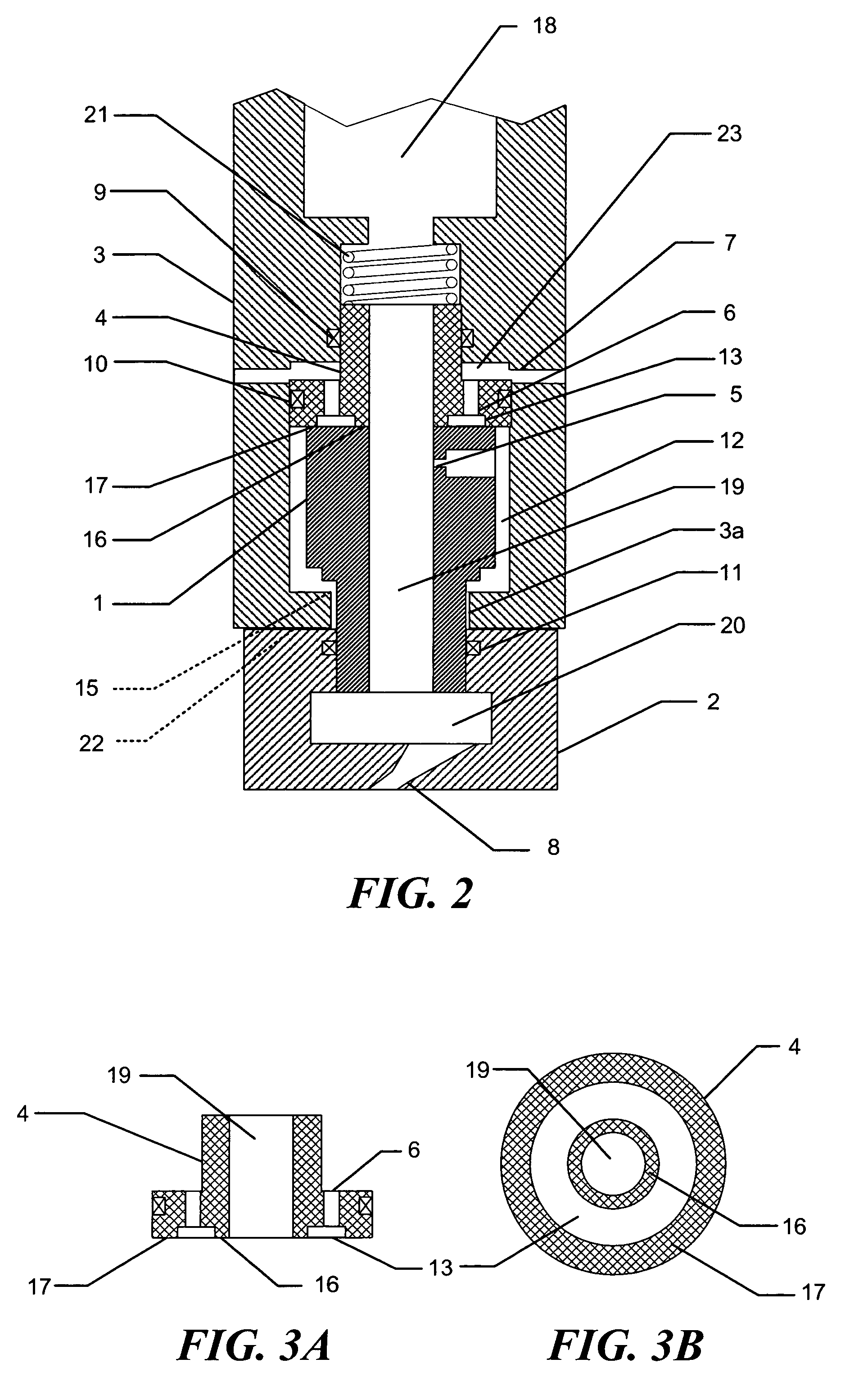Low friction face sealed reaction turbine rotors
a reaction turbine and sealing technology, applied in the field of rotary jetting tools, can solve the problems of increasing the cost and complexity of drilling, reducing the pressure and power available for jetting, and the torque produced by the working jet must be sufficient to overcome the static bearing, etc., to achieve low starting torque, reduce wear and torque, and reduce the effect of starting torqu
- Summary
- Abstract
- Description
- Claims
- Application Information
AI Technical Summary
Benefits of technology
Problems solved by technology
Method used
Image
Examples
Embodiment Construction
[0027]Referring to FIG. 1, a cross-sectional side view of a rotary jetting assembly in accord with the present invention is shown. The assembly includes four major components, including a rotor shaft 1, a nozzle head 2, a housing 3, and a seal head 4. Rotor shaft 1 and seal head 4 are disposed in housing 3, which includes a pressure chamber 12 (capable of withstanding the operating pressure of the system). Fluid enters at the top of housing 3 through an inlet passage 18, and is conveyed to pressure chamber 12 through an orifice 5, and to a reservoir 20 in a nozzle head 2 through a flow-through passage 19. While the present invention can be operated using a wide range of fluid pressures, normal operating pressures will range from about 3000 PSI to about 15,000 PSI. However, it should be understand that this range is exemplary, and is not intended to limit the present invention, since operating pressures as low as 1000 PSI and as high as 40,000 PSI are clearly possible. Nozzle head 2 ...
PUM
 Login to View More
Login to View More Abstract
Description
Claims
Application Information
 Login to View More
Login to View More - R&D
- Intellectual Property
- Life Sciences
- Materials
- Tech Scout
- Unparalleled Data Quality
- Higher Quality Content
- 60% Fewer Hallucinations
Browse by: Latest US Patents, China's latest patents, Technical Efficacy Thesaurus, Application Domain, Technology Topic, Popular Technical Reports.
© 2025 PatSnap. All rights reserved.Legal|Privacy policy|Modern Slavery Act Transparency Statement|Sitemap|About US| Contact US: help@patsnap.com



